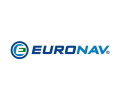

Euronav NV announced yesterday a Joint Development Program (JDP) with the largest shipbuilder in the world, Hyundai Heavy Industries (HHI) and classification societies Lloyd’s Register and DNV, to help accelerate the development of dual fuel Ammonia (NH3) fitted VLCC and Suezmax vessels. The initial term of the JDP will be three years.
Hugo de Stoop, CEO of Euronav: “Shipping is entering an era of rapid technological developments and increasing environmental efforts demanding strong stewardship. Working with key partners toward the safe transport and commercialization of new technologies will be instrumental in delivering benefits for the wider marine industry. This partnership will accelerate the development and adoption of ammonia as one of the key solutions for the shipping sector.”
Since the beginning of the year, Euronav has invested significantly in its fleet. The Company has acquired 2 Suezmaxes through resale of contracts and has taken over an early berth from owners unable to execute the contracts for the construction of two VLCCs. Today, Euronav confirms that it has entered into new contracts for the building of 3 Suezmaxes and that is has lifted the option to build a third VLCC as per the Company’s announcement made on 22 April 2021.
All these newbuildings will be delivered in a staggered timing, enabling all parties involved to make concrete progress towards the development of ammonia-fitted tankers.
Every vessel ordered is part of our fleet rejuvenation program and is already outperforming any other existing vessels in terms of fuel consumption and emissions, and in particular the older vessels that will be phased out of the fleet because of their age profile. In addition, the vessels will feature a gradual and increasing degree of readiness to be converted into dual fuel fully fitted Ammonia ships at a later stage, while retaining the possibility to convert them into dual fuel LNG vessels if it would make more commercial sense.
The three firm Suezmaxes were contracted for a total cost of USD 199.2 million (USD 66.4 million each). The vessels will be delivered in the third quarter of 2023 and the first quarter of 2024. Delivery for the lifted option VLCC will be the second quarter of 2023.
Euronav will meet the financing of this acquisition with existing liquidity and asset-backed debt capacity.
The flexibility that these vessels offer can only be achieved by being close to the latest technological developments that are constantly coming onto the market. As with any new technology, it is important to understand as much and as early as possible how to operate them in a safe, reliable, and efficient way.
Shipping is at the start of an intense period. It needs to apply new technologies, while simultaneously addressing challenging emission reduction objectives and maintaining the highest safety standards. The Joint Development Program brings together specialist parties to help accelerate these technological advancements. The program will ensure that Euronav and its partners gain control, yet retain flexibility in constructing future specifications for a new generation of crude tankers. Emissions compliance is critical to Euronav’s stakeholders. And with shipbuilding capacity likely constrained for the construction of large crude tankers until at least 2025, Euronav believes this will deliver the company a competitive advantage within its already established sustainability structure.
In today’s fast changing and volatile environment, Euronav states it is important to remain flexible and at the same time contribute to the global effort of reducing greenhouse gas emissions which is key to its own economic sustainability.
Source: Euronav NV